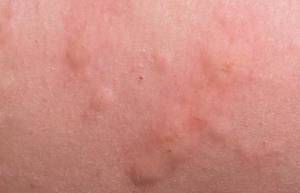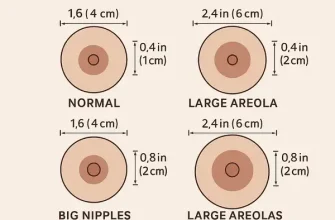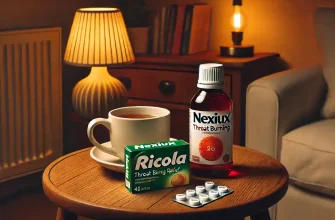A breast rash can be alarming, but it often results from common skin conditions. However, in some cases, it may indicate an underlying health issue. Understanding the causes, symptoms, and treatments can help individuals manage this condition effectively.
Prevalence of Breast Rash by Season (%)
This chart illustrates the prevalence of breast rash across different seasons. The highest occurrence is seen in summer, likely due to heat and sweating, while winter shows the lowest prevalence.
Common Causes of Breast Rash
- Irritant Dermatitis – Caused by allergens or irritants like soaps, lotions, or fabrics. Symptoms include redness, itchiness, and a burning sensation. It can often be managed by avoiding the triggering irritant and using hypoallergenic skin-care products. Applying a mild corticosteroid cream can also help alleviate discomfort.
- Heat Rash (Miliaria) – Occurs due to blocked sweat glands, often in hot and humid conditions. This results in small red bumps and a prickling sensation. Cooling the skin with cold compresses, wearing breathable fabrics, and keeping the affected area dry can reduce symptoms. Severe cases may require medicated creams or antihistamines.
- Intertrigo – A rash that develops in skin folds due to friction and moisture, commonly worsened by obesity or excessive sweating. This condition often appears as red, raw patches and can emit an odor. Treatment involves keeping the area dry, using absorbent powders, and applying antifungal or barrier creams to prevent further irritation.
- Fungal Infections – Candida infections thrive in warm, moist environments, leading to red, itchy patches. Symptoms often include a burning sensation and scaling. Over-the-counter antifungal creams like clotrimazole or prescription medications can help clear the infection. Wearing loose, moisture-wicking clothing can also prevent recurrence.
- Eczema (Atopic Dermatitis) – A chronic skin condition characterized by dryness, itching, and inflammation. Flare-ups can be triggered by stress, allergens, or harsh soaps. Treatment includes using emollients, topical steroids, and avoiding known irritants. Regular hydration of the skin is essential for long-term management.
- Psoriasis – Autoimmune disorder leading to scaly, red patches, sometimes affecting the breasts. This condition can cause significant discomfort and may require treatments such as topical corticosteroids, vitamin D analogs, or systemic therapies in severe cases. Light therapy is also used for resistant cases.
- Mastitis – An infection typically associated with breastfeeding, causing redness, pain, and swelling. In addition to antibiotics like cephalexin, warm compresses and frequent breastfeeding or pumping can help resolve the infection. Ignoring mastitis may lead to complications like an abscess, requiring drainage.
- Inflammatory Breast Cancer (IBC) – A rare but aggressive cancer that can cause redness, swelling, and an orange-peel texture. Unlike other rashes, IBC does not improve with topical treatments and often progresses rapidly. If a rash persists despite treatment, a biopsy and imaging tests are necessary for early diagnosis and intervention.
Causes of Breast Rash: Frequency of Occurrence (%)
| Cause | Frequency (%) |
|---|---|
| Irritant Dermatitis | 30% |
| Fungal Infections (Candida) | 25% |
| Heat Rash (Miliaria) | 15% |
| Eczema (Atopic Dermatitis) | 10% |
| Psoriasis | 8% |
| Mastitis | 7% |
| Inflammatory Breast Cancer | 5% |
This chart presents the common causes of breast rash and their frequency of occurrence. Irritant dermatitis and fungal infections are the most prevalent, while inflammatory breast cancer is the least frequent but requires urgent medical attention.
Symptoms to Watch For
- Redness or irritation – Often appears as mild discoloration and may feel warm to the touch. Try applying a fragrance-free moisturizer to reduce discomfort.
- Itching or burning sensation – Can be due to dryness or an allergic reaction. Cooling gels with aloe vera may provide relief.
- Pain or tenderness – Common in infections like mastitis. If persistent, seek medical evaluation.
- Blisters or peeling skin – May indicate an allergic reaction or fungal infection. Keep the area clean and avoid scratching.
- Swelling or warmth – Possible signs of an underlying infection. Applying a cold compress can help, but persistent swelling should be checked by a doctor.
- Thickened or scaly patches – Can be a symptom of chronic skin conditions like eczema or psoriasis. Using medicated creams such as hydrocortisone can reduce symptoms.
- Skin texture changes (e.g., dimpling or hardening) – In rare cases, may be linked to serious conditions such as inflammatory breast cancer. A medical consultation is advised if changes persist.
If a breast rash persists, worsens, or is accompanied by fever, swelling, or nipple discharge, medical attention is necessary.
Modern Diagnostic Methods
- Physical Examination – A dermatologist or physician assesses the rash’s characteristics.
- Skin Biopsy – A small skin sample is analyzed to rule out infections or cancer.
- Dermatoscopy – A non-invasive technique using magnification to examine skin changes.
- Bacterial & Fungal Cultures – Tests to identify underlying infections.
- Mammogram or Ultrasound – Imaging studies to detect any internal breast abnormalities.
- Punch Biopsy for IBC – Essential for confirming inflammatory breast cancer.
Diagnostic Accuracy & Cost Estimates:
| Method | Accuracy (Scale of 1-10) | Average Cost (USA) |
|---|---|---|
| Physical Examination | 6/10 | $50 – $200 |
| Skin Biopsy | 9/10 | $500 – $1,500 |
| Dermatoscopy | 7/10 | $100 – $500 |
| Culture Tests | 8/10 | $100 – $300 |
| Mammogram/Ultrasound | 8/10 | $200 – $1,000 |
| Punch Biopsy for IBC | 10/10 | $1,500 – $3,000 |
Medical Cases from the U.S.
- Case 1: A 34-year-old woman from Texas developed an itchy, red rash under her breasts. A culture test confirmed a Candida infection. She was treated successfully with topical clotrimazole.
- Case 2: A 42-year-old from California noticed persistent breast redness. A punch biopsy diagnosed IBC, leading to prompt chemotherapy treatment.
Likelihood of Seeking Medical Help Based on Symptom Severity (%)
This chart illustrates the likelihood of individuals seeking medical help based on the severity of their symptoms. More severe symptoms, such as swelling and texture changes, result in a significantly higher percentage of medical consultations.
Editorial Advice
Reyus Mammadli, healthcare advisor, emphasizes that while most breast rashes are harmless, persistent or unusual symptoms require a medical evaluation. “If a rash doesn’t respond to basic skincare measures within a week or two, seek professional advice. Inflammatory breast cancer, though rare, progresses quickly and should never be ignored.”
Regular breast self-examinations, good hygiene, and awareness of warning signs can help detect serious conditions early. Always consult a dermatologist or physician for accurate diagnosis and tailored treatment.










Please please try wearing a breast sling. I realize I am recommending a product on the market, but this device has been miraculous for me. I have had bouts with intertrigo for years, barely managing to keep it under control with medications. I bought a sling recently and my problem was alleviated almost immediately The area beneath my breasts stay dry and I no longer need for medications of any sort!